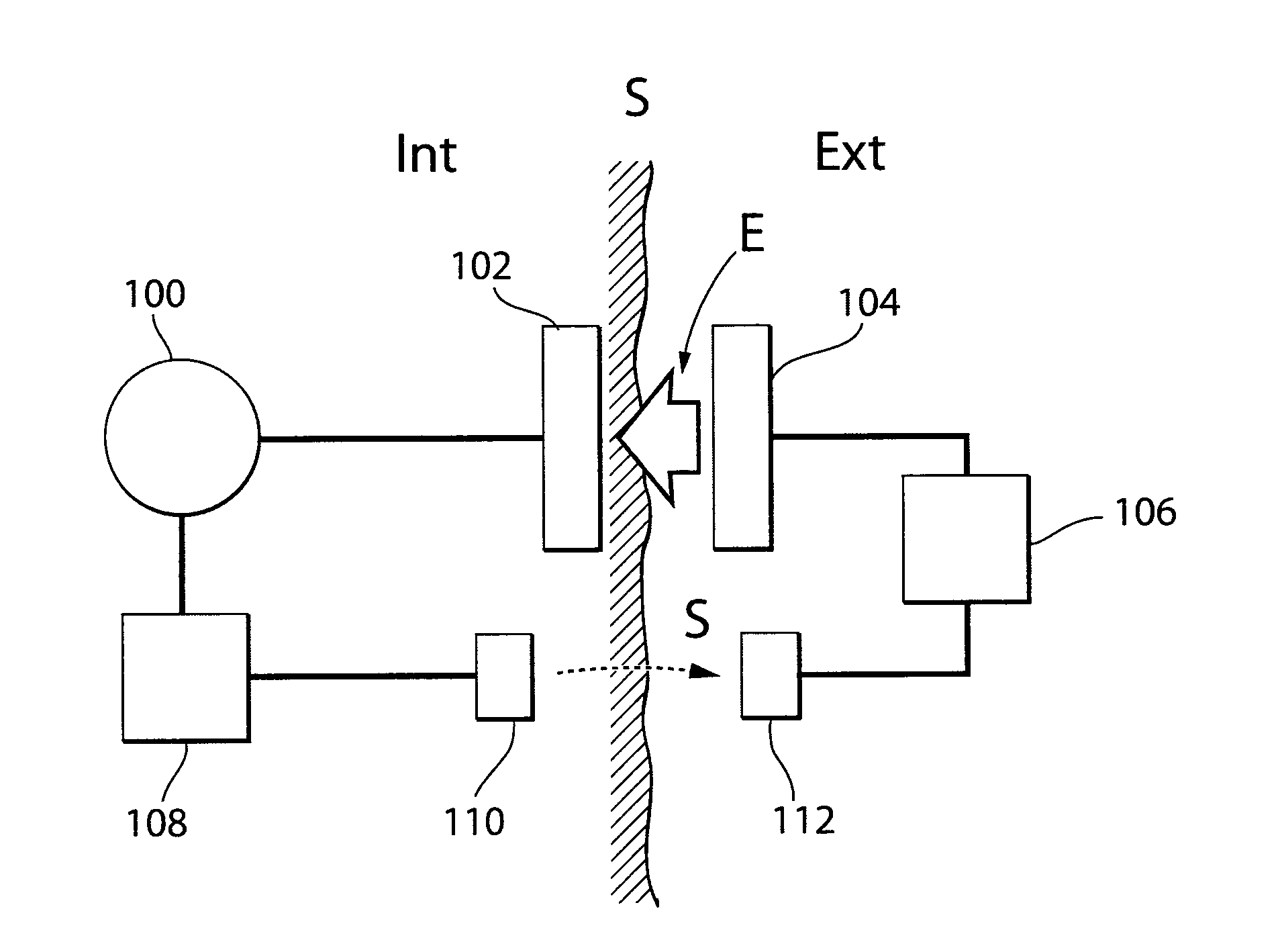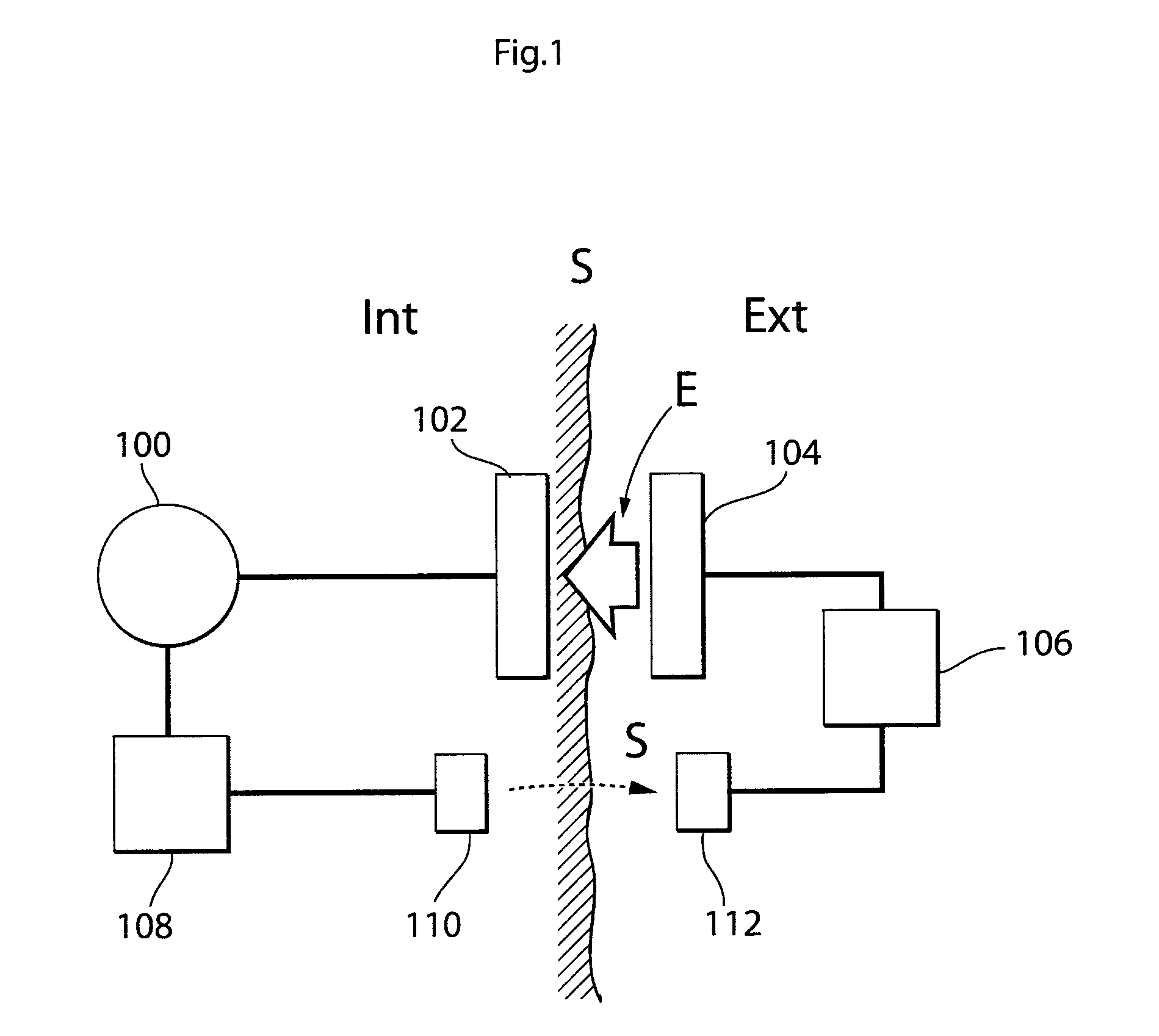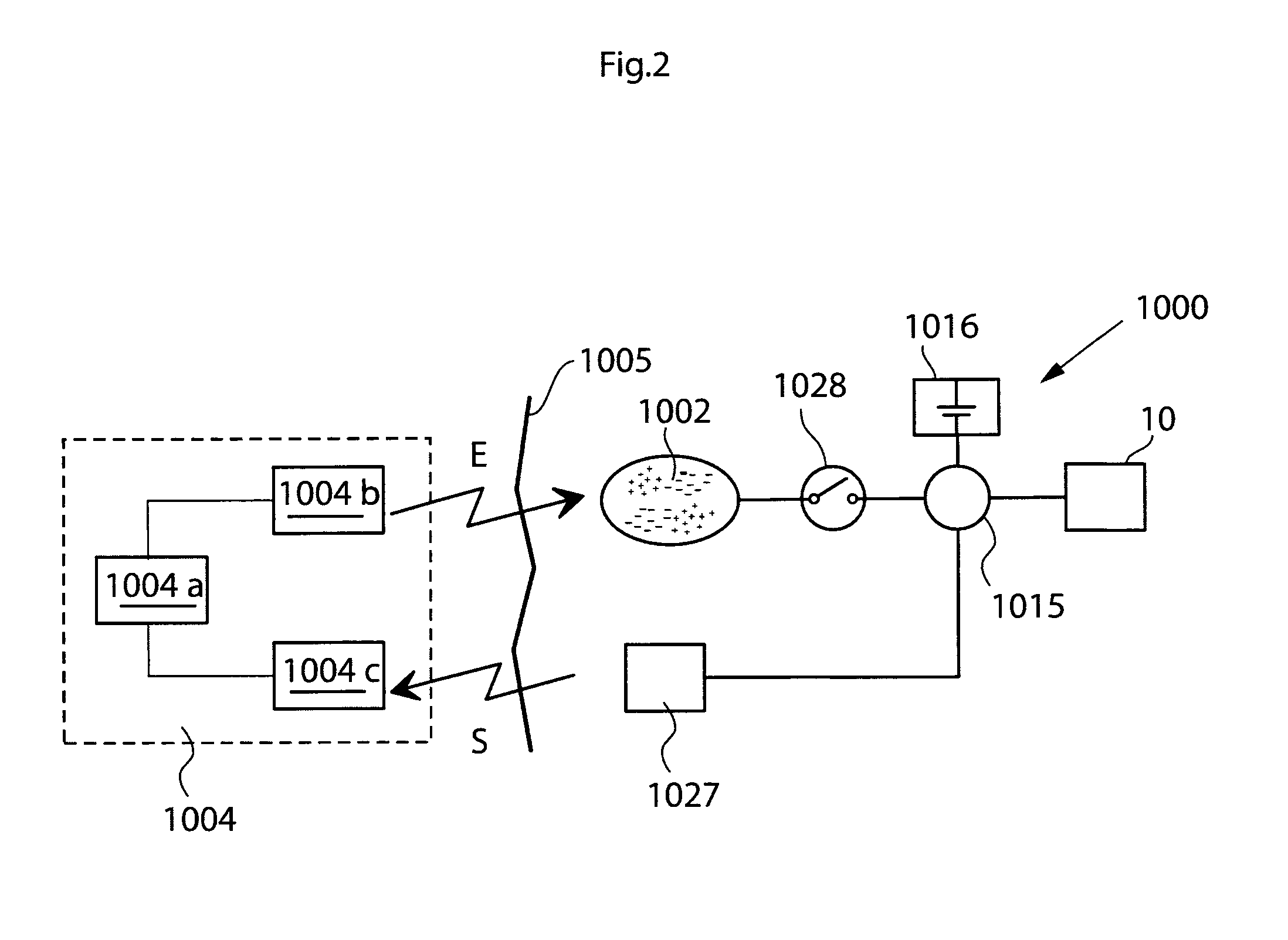Method and apparatus for supplying energy to a medical device
a technology for medical devices and wireless energy, applied in the direction of exchanging data chargers, prostheses, therapy, etc., can solve the problems of disturbing the intended medical effect of the device, affecting the efficiency of energy transfer, and the energy supplied to the medical device may also increase dramatically, so as to achieve faster charging, increase the life of the charge occasion, and increase the energy charging rate
- Summary
- Abstract
- Description
- Claims
- Application Information
AI Technical Summary
Benefits of technology
Problems solved by technology
Method used
Image
Examples
Embodiment Construction
[0130]Briefly described, wireless energy is transmitted from an external energy source located outside a patient and is received by an internal energy receiver located inside the patient. The internal energy receiver is connected to an electrically operable medical device implanted in the patient, for directly or indirectly supplying received energy to the medical device. An energy balance is determined between the energy sent by the external energy source and the energy received by the internal energy receiver, and the transmission of wireless energy is then controlled based on the determined energy balance. The energy balance thus provides an accurate indication of the correct amount of energy needed, which is sufficient to operate the medical device properly, but without causing undue temperature rise.
[0131]In FIG. 1, an arrangement is schematically illustrated for supplying an accurate amount of energy to an electrically operable medical device 100 implanted in a patient, whose ...
PUM
 Login to View More
Login to View More Abstract
Description
Claims
Application Information
 Login to View More
Login to View More - R&D
- Intellectual Property
- Life Sciences
- Materials
- Tech Scout
- Unparalleled Data Quality
- Higher Quality Content
- 60% Fewer Hallucinations
Browse by: Latest US Patents, China's latest patents, Technical Efficacy Thesaurus, Application Domain, Technology Topic, Popular Technical Reports.
© 2025 PatSnap. All rights reserved.Legal|Privacy policy|Modern Slavery Act Transparency Statement|Sitemap|About US| Contact US: help@patsnap.com



